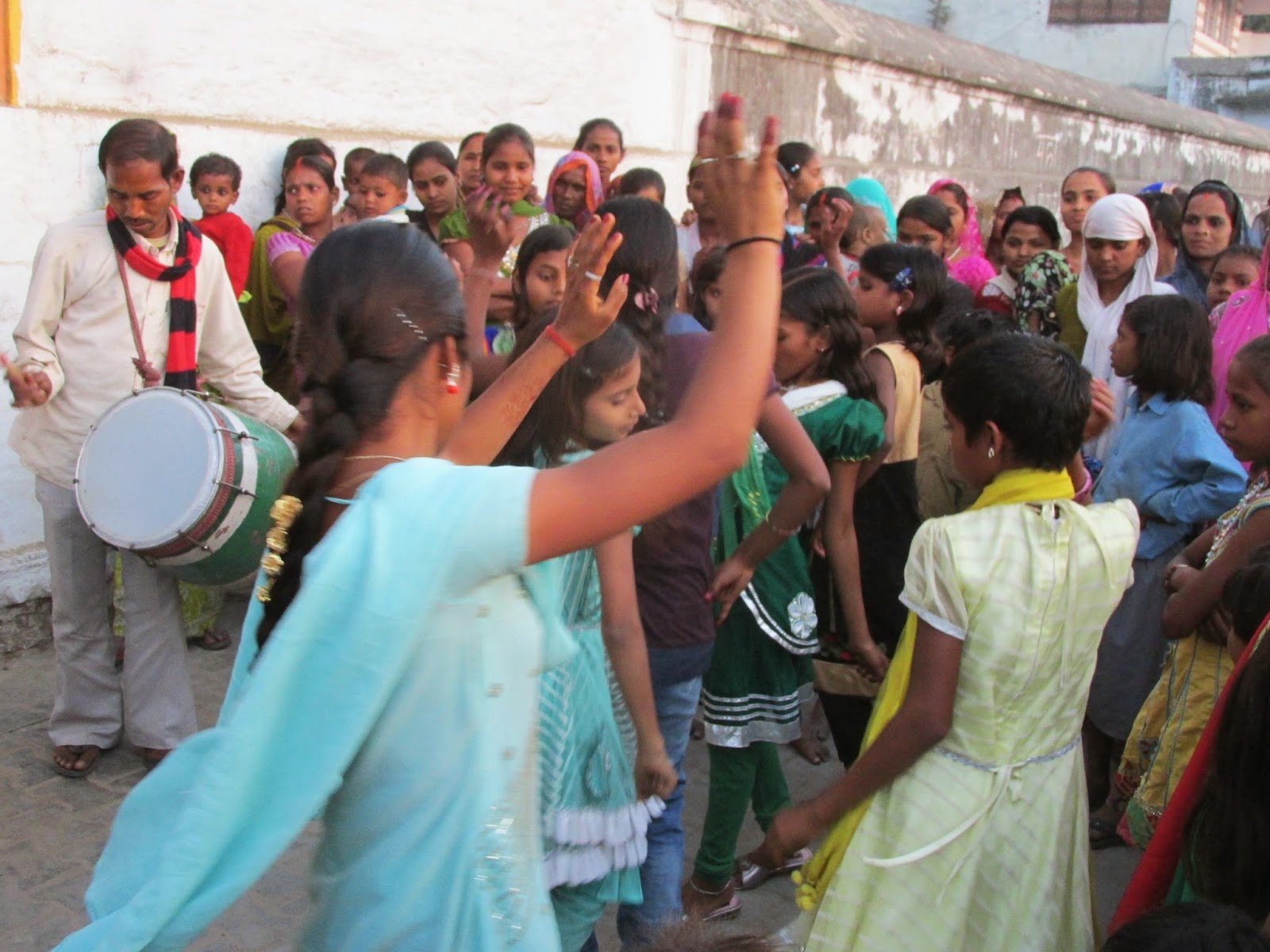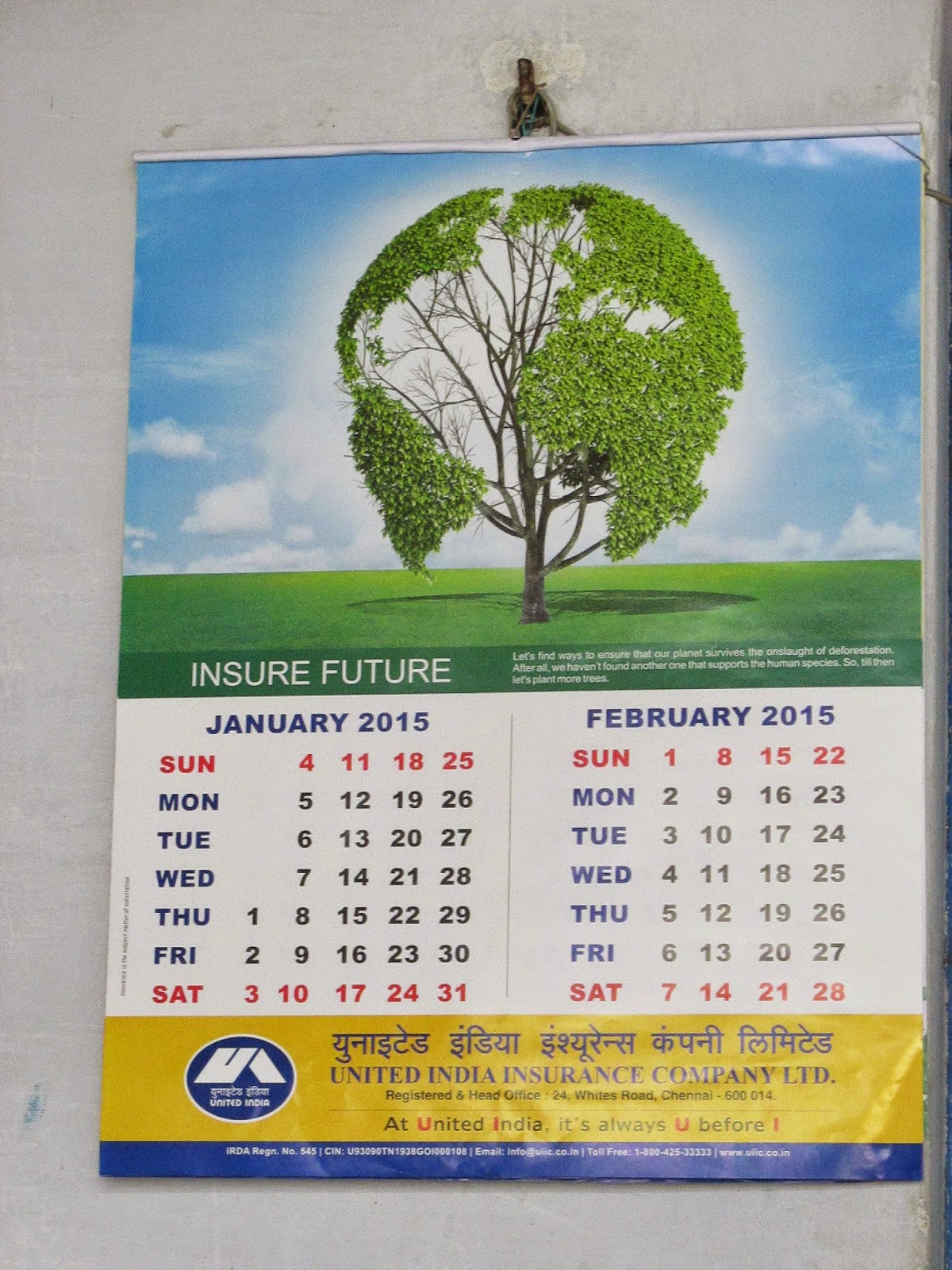Sunday
morning we awoke early to return to the River Ganga to observe morning washing.
After leaving the car to walk to the river, we joined a group of local people
going to the ghats. I enjoyed their music and chanting/praying. After several
minutes, they turned off to go to a temple to pray before going to the river.
At the
river we took a boat to watch the morning washing. We were at the same area
where we had watched the ceremony Saturday night. In the morning, foreign
tourists were in the boats while Indian tourists joined local people on the
river bank.
Both men and women bathe in
the sacred river.
Women enter fully clothed while men wear a cloth around their
waist.
In addition to bathing, different sections are used for washing clothes.
This is done by people whose families have been clothes washers for many
generations, as families stay in the same job. Nowadays, however, some young
people are leaving their family profession for better jobs where they can make
more money.
In
addition to observing the washing, it was nice to be able to see the buildings
along the river.
While we were there, the sun rose on the other side of the
river. That side has no river bank and is sandy. People go there to swim. In
the monsoon season, the river is much wider and higher.
We exited our boat near
the cremation area
and saw the piles of wood being delivered and stored.
Then we
had a quick walk along the narrow lanes of the Old City to get to the street. There
was so much to observe that I felt a bit rushed as we hurried along them to get
to the street.
The lanes are lined with small altars.
Many houses have a
sculpture of Ganesha above the door for protection and good luck. There are
many altars outside the houses. There was a man with a cobra who wanted money
from tourists. There are also many temples. After leaving our bags in a shop to
ensure that we couldn’t take photos inside, we went into an old temple that has
a gold stupa—about 50 kilograms of gold.
At 8:00
we returned to the hotel for breakfast. The guide informed us that our tour was
over and he’d pick us up at 3:00 for the afternoon activity. I was not happy
about having seven hours in the hotel, as we had guide services for the day and
our itinerary had a morning activity. We had changed the early morning river
trip from Friday to Saturday because of our late arrival, but we still should
have had the morning activity. I realized that he had combined that with
Friday’s plan, probably so he could have some time off to visit his son who was
home for a friend’s wedding. But I was still didn’t like being left for seven
hours and told him that I was not happy. He then offered to take us to his home
in a village. Kasey decided not to go because we had to eat breakfast quickly
and then leave and she wanted to rest for a while. So I went with him on his
motorcycle. It turned out to be an interesting experience.
At the
house I met his wife and sons and the three friends who had gone to the wedding
Saturday night. One young man and the guide’s uncle were watching the
India-South Africa cricket match of the World Cup for cricket. I learned a
little about that game, about which I knew nothing and which is quite popular
in India. Matches can take all day—8
hours.
Then
the guide said his son would take me around the village. I invited his friend
to join us, and one of the women also wanted to go. They were excited to have
this special tour because I was there. We went to the Sisters of Charity
orphanage, which is affiliated with Mother Theresa. It is an orphanage for
handicapped children ages 8 to 18. About 50 children live there. Around 12 are
physically handicapped and attend the small school so they will have an
education. Another 15 are mildly mentally handicapped and receive job training.
The sisters also help them get married and provide a sari for the occasion. The
rest of the children are severely mentally handicapped. It looks like the
children are well cared for. The place is clean and neat. Children I saw looked
happy. When parents abandon the children, they have to register with the police
that they are leaving their child at the orphanage. Children who are too young
or too old for this orphanage are sent to homes in other cities. Parents who
give the children to the orphanage have to sign a paper with the police.
Next we
visited the 600-year-old ashram that the family has belonged to for many
generations. They follow a guru named Kabir. My hosts talked with one of the
men for a long time, as they were quite interested in Kabir’s ideas, some of
which they translated for me. Kabir questioned the caste system and believed
that it should be eradicated. He believed in equality for all people and all
religions. He thought people should focus on life now and not put their energy
into being concerned about an afterlife. They also believe that there are 25
elements to understand. The last two are nature and humans. When they
understand all 25 elements, they are enlightened.
Kabir’s
followers wear a necklace made from string as a symbol of their commitment.
Three of the people we saw were teenagers. Like the young Buddhist monks, they
may be there so they have food and a good place to live. Later they can stay or
leave. The ashram has daily prayer services that people can attend or not as
they wish. Many of the followers go around the country preaching their ideas.
We
stopped at a temple to see the stages where a special Hindu play is performed
every year. The stage on one side is for God; the stage on the other side is
for the devil.
The
village has a mixture of houses, which probably represent a mixture of
socio-economic status, in close proximity. The guide’s house and a few others
are quite nice. Others are simpler.
Dung was drying on the ground
and on walls.
Another
activity was visiting the uncle’s home business making aluminum containers.
Amazingly, it takes only two minutes to form and polish a container from the
round piece of aluminum. The man who was asked to take me there was a friend
who is starting his own travel agency in Delhi. He was in Varanasi for a month
to learn more about his home city. Our guide is his mentor.
I was
given lunch, and my guide told me what foods go together: rice and lentil dal;
bread and potatoes and peas. The woman sitting with me told me that the guide
didn’t think I was eating much, but I thought I ate a lot and I was full.
The
final activity was visiting another relative’s home. This one is a painter who
paints people in a state of meditation. Then we went to say “good-bye” to the
friend who got married, as he has a couple weeks of leave before returning to
Delhi and work. This was an arranged marriage. Prior to their marriage, the
couple had met twice over half a year. They talked on the phone every day for
about an hour; so their friends felt that they knew each other well enough to
get married. The bride was sitting on the bed wearing her wedding sari. The
groom was in casual clothes. The visitors from Delhi were given gifts. Later I
learned that it is traditional to give close friends a gift. They received two
boxes of sweets, and the woman I’d talked to quite a bit gave me one. It looked
like there was also silk in the bags the women were given.
Since they
were returning to Delhi on the same train as Kasey and me, they joined us for
our afternoon activity and we all went to the train station together in our
van. The afternoon activity was visiting Ramnagar Fort.
Built in the 18th
century, some of its architecture is more European in style than the older
forts.
It is, of course, intricately carved in many places. Some of it is now a
museum with displays of old American cars (surprisingly), guns, rifles, and
some European vases. The weapons had basic labels, but the other items didn’t.
The main item of interest in the museum is a clock that is several hundred
years old and is still accurate telling the day, time, horoscope sign, and a
few other things.
The
fort is on the river bank. There is a floating bridge across the river for
bicycles and motorcycles that is taken apart and stored during the monsoon
season when the river is higher and wider.
Our
final stop was a small temple to the goddess Durga.
Two of the doors have bells
that people reach up and ring for good luck.
As I was finishing walking around
the temple, I heard drumming. The guide called us to go out to the street
quickly. A small wedding party had arrived and people were dancing at the base
of the temple. The groom was standing in the background.
Children surrounded
Kasey after she shook hands with two of them.
Then we
went on to the train station for our overnight train to Delhi. Our new friends
took us to our car and made sure we found our beds. This time we had the side
beds, the ones parallel to the aisle. They turned out to be OK, as once the
curtain was drawn, it was very private.
Random
information:
All of
our cars had fire hydrants, which I’d not seen before.
Indian
calendars have the days down rather than across. That would take some getting
used to.





































No comments:
Post a Comment